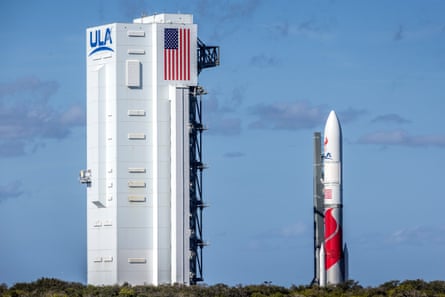Science and business are heading for an astronomical clash – over the future exploration of the moon and the exploitation of its resources. The celestial skirmish threatens to break out over companies’ plans to launch dozens of probes to survey the lunar landscape over the next few years. An early pioneer – Peregrine mission one – is set for launch this week.
The aim of this extraterrestrial armada – largely funded through Nasa’s $2.6bn Commercial Lunar Payload Services (CLPS) initiative – is to survey the moon so that minerals, water and other resources can be extracted to build permanent, habitable bases there. These would later provide a springboard for manned missions to Mars.
But astronomers have warned that an unrestricted rush to exploit the moon could cause irreparable damage to precious scientific sites. Gravitational wave research, black hole observations, studies to pinpoint life on tiny worlds that orbit distant stars, and other research could be jeopardised, they say.
“The issue has become urgent,” Martin Elvis, of the Center for Astrophysics, Harvard & Smithsonian, told the Observer. “We need to act now because decisions made today will set the tone for our future behaviour on the moon.”
This point was backed by astronomer Professor Richard Green, of the University of Arizona. “We are not trying to block the building of lunar bases. However, there are only a handful of promising sites there and some of these are incredibly precious scientifically. We need to be very, very careful where we build our mines and bases.”
Later this month, a working group – recently set up by the International Astronomical Union and headed by Green – will meet UN officials to start negotiations that would, it is hoped, lead to a strengthening of legislation for protecting interplanetary resources. The 1967 Outer Space Treaty prevents nations from making territorial claims on celestial bodies, but says nothing about space mining and exploitation of resources, the journal Science warned recently.
An illustration of the problem facing scientists was highlighted by Green: “A few deep lunar craters have been discovered to have been shrouded in shadow since the moon formed billions of years ago. Sunlight has never reached their floors and so they are unbelievably cold – probably only a few dozen degrees above absolute zero. And that makes them scientifically very valuable.”

Craters like these would be ideal for housing delicate scientific instruments – for example infra-red telescopes that need to be cooled constantly – and there are plans to build such an observatory, one that would be powerful enough to observe distant, dim stars that might have small rocky planets in orbit round them. “These are ideal places to seek life but they lie outside the limits of current observatories,” said Green.
In addition, it is thought these lightless craters may contain water in the form of super-cold ice that did not evaporate as it did elsewhere on the moon during its early history. These sunless seas of ice could reveal precious information about the history of water’s arrival, possibly via comets, on the moon – and on nearby Earth where it played a key role in the appearance of life.
However, craters filled with ice would also be priceless in the eyes of lunar colonisers and would become irresistible targets for companies and astronauts setting up colonies. “Water is going to be incredibly important to humans on the moon but we have to make sure it is taken from places that are not scientifically irreplaceable,” said Elvis.
Another key site has been earmarked by radio astronomers. It lies on the far side of the moon, which is shielded from the chaotic radio emissions that pour from Earth. It would be an ideal place to erect a giant telescope that could detect – without interference – ultra-low radio waves that emanate from the early universe and which would provide crucial information about the formation of the first galaxies.
However, Nasa – and other space agencies – have plans to circle the moon with satellites to control robot rovers and other devices on the lunar surface. Radio signals leaking from these could ruin the sensitivity of the proposed far-side radio telescope.
At present, the building of moon bases and mines is still a distant goal for space engineers. Prospecting for resources is only beginning – although it will soon make headlines. Apart from Peregrine, many other lunar probes are scheduled for launch this year as the Nasa CLPS programme begins in earnest. Many, like Peregrine, will be built and launched by private companies and will include Viper, a robot rover that will survey the moon’s south pole; Lunar Trailblazer that will survey its surface for water; and Artemis II which is scheduled to put a four-person crew in lunar orbit later this year.
In this way, the sites of resources that will be crucial for building and running colonies will be revealed. Many early robot missions will fail and the route to lunar exploitation will be strewn with setbacks. Nevertheless, lunar industrialisation now seems a real prospect. This will help science by bringing down launch costs but, astronomers stress, should not involve the reckless destruction of sites that are unique to the moon and invaluable to science.
“The trouble is that it takes a long time to make changes to UN treaties, so we have to act now if we are to have a hope of making sure we have international agreements in place to protect the unique scientific features of the moon and ensure they are not destroyed through thoughtless exploitation,” said Green.